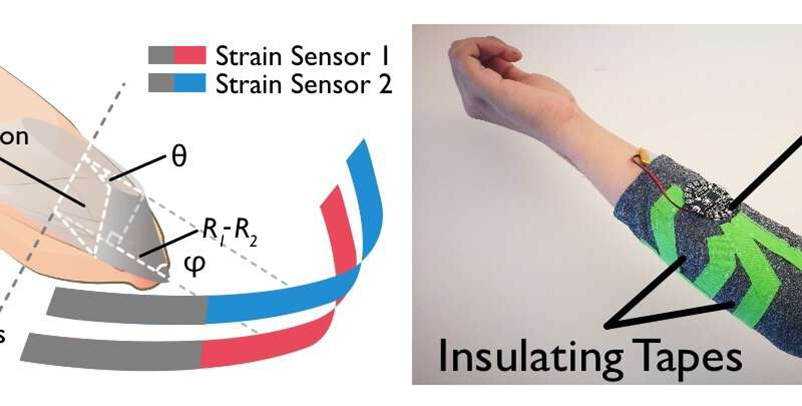A team of researchers at Dartmouth College have developed a low-cost motion-sensing fabric that athletes and physical therapy patients can wear on their arm to optimize performance, reduce injury and accelerate recovery.
Related New Technology Used by NFL Athletes Gives Teams and Trainers Edge in Injury Assessment
The flexible fabric, which monitors joint rotation, is lightweight, washable and comfortable, making it ideal for participants of all levels of sport or patients recuperating from injuries, reports Dartmouth.
Accurate monitoring of joint movement is critical for performance coaching and physical therapy. For athletes where arm angle is important–anyone from baseball pitchers to tennis players – long-term sensing can help instructors analyze motion and provide coaching corrections. For injured athletes, or other physical therapy patients, such monitoring can help doctors assess the effectiveness of medical and physical treatments. At the same time, the monitors need to be portable, comfortable, and capable of sensing subtle motion to achieve a high-level of precision.
Currently available joint monitoring technologies require heavy instrumentation of the environment, rigid sensors, or embedded electronics.
The Dartmouth researchers focused on raising sensing capability and reliability, while using low-cost, off-the-shelf fabrics without extra electrical sensors. The minimalist approach focused on fabrics in the $50 range.

“For less than the price of some sweatshirts, doctors and coaches can have access to a smart-fabric sensing system that could help them improve athletic performance or quality of life,” Qijia Shao, a PhD student at Dartmouth who worked on the study.
The fabric has a thin silver layer for electrical conductivity, and there’s a micro-controller in the monitor that receives and processes the data generated. As the fabric stretches during joint movement, it generates data on skin deformation and pressure. Based on this information, it determines the joint rotational angle through changes in resistance. When a joint is wrapped with the conductive fabric it can sense joint motion.
The device has been tested on the elbow joint in ten participants. They said it was comfortable, easy to use, and flexible.
Related Nexus Uses Revolutionary Tracking Technology for CrossFit Athletes to Quantify Their Workout
“Testers even saw this for use in activities with high ranges of movement, like yoga or gymnastics,” said Zhou. “All participants said they’d be willing to purchase such a system for the relatively inexpensive price tag.”
The study was published in Proceedings of the ACM on Interactive, Mobile, Wearable and Ubiquitous Technologies.












